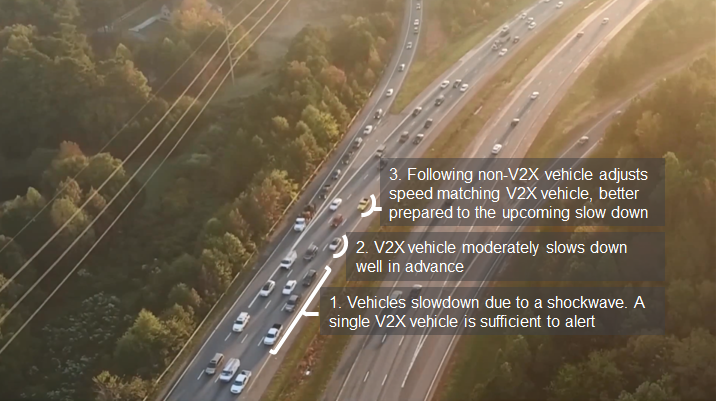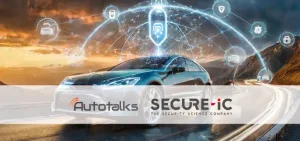By: Onn Haran
In a perfect world, V2X would be in all vehicles, enabling all road users to drive safely and efficiently. In our less-than-perfect world, some wonder why V2X should be deployed in vehicles, considering the initial low penetration.
The doubters’ calculation is simple. Let’s assume that 10% of vehicles will have V2X in few years. Under this assumption, only 1% of total accidents involving 2 vehicles can be prevented. So why bother installing V2X at all, if so few lives can be saved?
The algebra is obviously correct, but the perspective is completely wrong. A car buyer cares only about his own safety and less about overall accident statistics. At 10% penetration, a vehicle equipped with V2X would avoid 10% of collisions with other vehicles.
V2X can protect equipped vehicles at a higher percentage than penetration
V2X can mitigate rear-end collisions even with low penetration. An alert driver, or a vehicle with an advanced safety braking system, can initiate a hard brake when a car ahead is getting too close. Thus, the severity of the accident will be decreased or even avoided. On the flip side, the vehicles behind will have a greater difference between their speed and speed of vehicle ahead, forcing them to respond even with harder braking. The risk is just amplified and transferred back.
V2X solves the problem differently by alerting drivers well in advance. The driver can moderately slow down, mitigating the need for hard braking. This resolves the problem at its root; thanks to the short latency direct communication between vehicles.
Typically, slowdown spans over multiple vehicles. Even a single vehicle with V2X is sufficient to alert about the slowdown. With that, the slowdown detection probability is increased, for example 27% for 3 vehicles in a slowdown with 10% penetration, and 67% for 10 vehicles, in the case of a longer queue.
According to NHTSA[1], in 2018, rear-end collision claimed the lives of 2,439 people on US roads, which is 7.2% of overall traffic fatalities, or 18.5% of all fatalities resulting from a collision of two vehicles. 594,000 people were injured, which are 31.4% of overall injuries, or 44.7% of overall injuries resulting from a collision of two vehicles.
Assuming that a rear-end collision can be mitigated if one of the three vehicles ahead would have alerted in advance, then V2X at 10% penetration reduces the fatalities resulting from a collision of two vehicles by 13% and the injuries by 17.6%.
V2X can also protect non-equipped vehicles
It is important to note the great impact that V2X has protecting not only itself, but also all other vehicles behind it. As V2X equipped vehicles would begin a slowdown well in advance, the following non-equipped vehicles would be able to avoid hard braking as well.
A glimpse of the potential live-saving can be seen in end-of-queue warnings used in work zones. Work zone accidents are responsible for nearly 700 fatalities every year in US. A proactive warning system managed to reduce crashes by 45%[2].
A similar conclusion was drawn by EuroNCAP when it rewarded the VW Golf V2X system, saying: “it is difficult to quantify the safety benefit. It is expected to be disproportionate to the numbers of cars equipped with the system, as the prompt reaction of one driver has positive knock-on effects on others.”[3]. In other words, V2X protects many vehicles behind it and not just itself, therefore its safety benefit is amplified above the penetration rate.
Indeed, it is hard to quantify, but let’s assume, just for the sake of calculation, that V2X can prevent rear-end accident for two vehicles behind it. Rear-end collisions occur in dense roads, where traffic speed changes abruptly. Therefore, in some cases, if a non-equipped vehicle would break abruptly, more than two vehicles would be at risk. With two additional vehicles protected by V2X and 10% penetration, 29% of the vehicles will be protected from rear-end accidents, at the detection rate calculated above.

V2X is valuable even with low penetration. OEMs should deploy V2X in more and more vehicles to further increase the value. V2X offers an immediate protection to car owners, and to other drivers on the road.
[1] https://cdan.nhtsa.gov/tsftables/tsfar.htm
[2] https://www.workzonesafety.org/files/documents/training/courses_programs/rsa_program/RSP_Guidance_Documents_Download/RSP_EndOfQueueWarning_Guidance_Download.pdf
[3] https://cdn.euroncap.com/media/58058/volkswagen-local-hazard-warning.pdf






